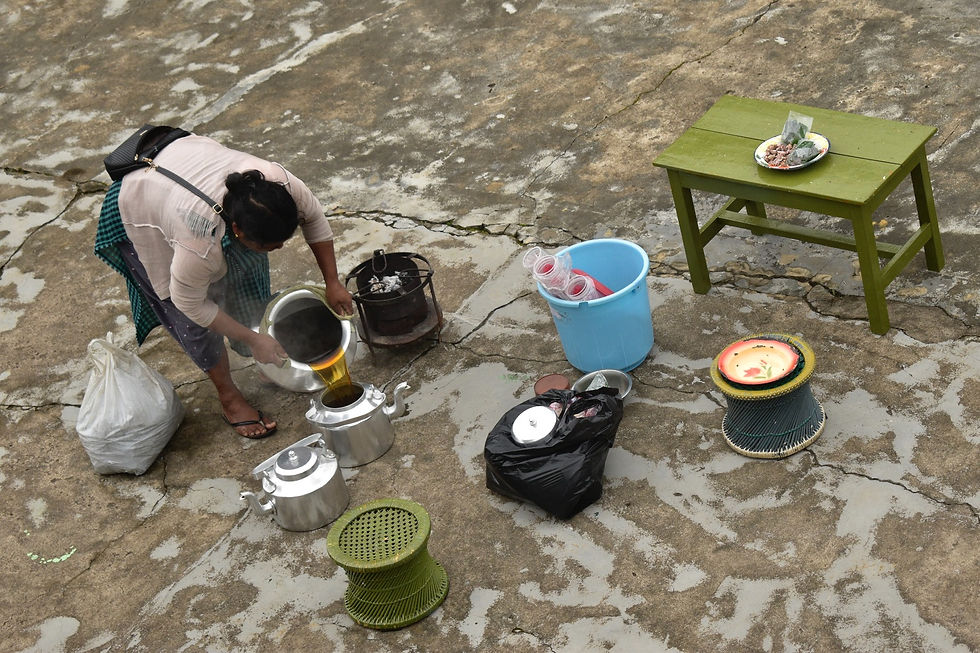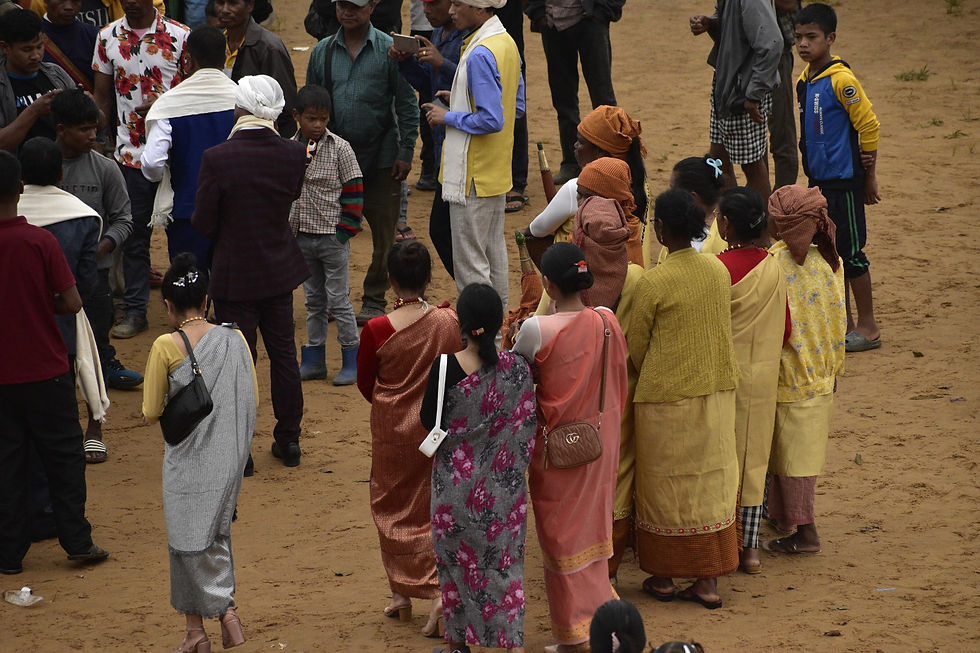THE BEHDEINKHLAM FESTIVAL OF SOHKYMPHOR
- Sarmon Talang
- Nov 27, 2023
- 3 min read
- Written by Sarmon Talang, Fifth Semester, Media Technologies, 2023


Behdeinkhlam is the most important festival of the Jaintias and is celebrated after the sowing is done. It is celebrated annually, usually in the month of July - August. It is popular and colourful festival.
The Behdeinkhlam festival is a vibrant celebration in Sohkymphor where people
make and display the "rong". They dance joyfully, enjoy special rituals, and appreciate those who contribute to the festivities. The"rong" are paraded, and the most beautiful one is kept for the end.
The Behdeinkhlam festival in Sohkymphor is a special event held in August.


Before the final day, people from different areas of Sohkymphor, who follow the Niamtre religion, begin making something called "rong". They gather funds from various places to support this.

A day before the festival's big day, there's a joyful dance that happens all around the village, like a parade.This dance starts at 2 PM, casting a warm glow on the festivities. People of all ages and backgrounds gather to participate. They wear vibrant costumes, move to lively music, and wave colourful banners.



It's like a joyful parade that winds its way through the village streets, spreading happiness and excitement. The dancing continues energetically until around 6:30 PM, just before the sun sets. This tradition brings everyone together, creating a sense of unity and anticipation for the main day.

Now, on the actual
festival day, everyone
wakes up early. The men
in the village participate
in a morning dance that
goes from house to house. Each household
offers food or drinks to
the dancers.

This special dance is guided by a volunteer to ensure everything goes smoothly and safely. Once they dance
at all the houses, they head back home to prepare for the final event and finish making the "rong".


The main event of the festival kicks
off at 2 PM sharp. It's a moment of
great significance as important
guests and leaders, such as the chief
guest and Daloi, arrive at the field.
The anticipation in the air is
palpable. One by one, the "rong"
which are these beautifully crafted
and vibrant structures, are carefully
transported to the field. These
"rong" are like giant, colorful
decorations that represent the heart
and soul of the festival. Watching
them being brought in is a sight to
behold, as each one adds to the
festive atmosphere, building
excitement and setting the stage for a
day filled with celebration and
tradition.

As the clock ticks, the lively dance
temporarily pauses, making way for
a solemn religious ceremony right
there in the field.

This sacred ritual involves three significant
clans: the Tang, the Talang, and the
Lyngdoh. The participants from these clans
gather together, each representing a unique
aspect of their culture and heritage. Prayers
are offered, and rituals are performed,
connecting the community with their deep-
rooted traditions and spirituality. It's a
moment of reverence and reflection, as
people come together to honor their shared
history and beliefs.




After this ceremony, all the people who were playing drums and flutes gather together, and their efforts are appreciated.


Then comes a fascinating part: they carry and dance with the "rong". Just before the closing ceremony, a group of young men carry the "rong" and dance with it.
The animal-shaped "rong" symbolize the headless creature known "Khlam".



When it's time to spread out the "rong", they carry each one to its correct spot based on how it appears. The most stunning "rong" is always saved for the end. This way, they arrange them beautifully, and everyone can admire the most beautiful one last.


Once the "rong" is placed, there's a belief that no one should take the things used to make it. This is because taking those things home might bring back bad luck.



Comments